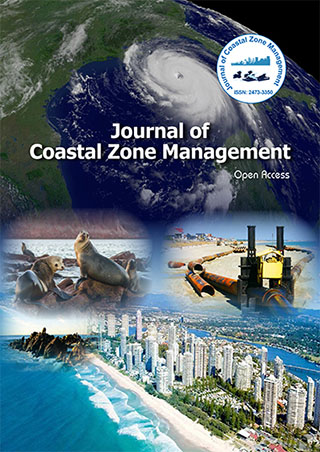зҙўеј•дәҺ
- е®үе…ЁзӮ№дә®
- еҸӮиҖғжҗңзҙў
- е“Ҳе§ҶиҫҫеӨ§еӯҰ
- дәҡеҲ©жЎ‘йӮЈе·һEBSCO
- OCLC-WorldCat
- жҷ®еёғйҡҶж–Ҝ
жңүз”Ёзҡ„й“ҫжҺҘ
еҲҶдә«жӯӨйЎөйқў
жңҹеҲҠдј еҚ•

ејҖж”ҫиҺ·еҸ–жңҹеҲҠ
жҠҪиұЎзҡ„
жұЎжҹ“жҺ§еҲ¶ 2020пјҡдҪҝз”Ё GIS дёӯзҡ„ AHP ж–№жі•е®ҡдҪҚ Savojbolagh еҺҝеҹҺеёӮеһғеңҫеЎ«еҹӢеңә - Alzoubi Isham - еҫ·й»‘е…°еӨ§еӯҰ
йҳҝе°”зҘ–жҜ”·дјҠжІҷе§Ҷ
йҖүжӢ©еәҹејғзү©зҡ„еЎ«еҹӢең°зӮ№жҳҜеҹҺеёӮеәҹејғзү©з®ЎзҗҶдёӯзҡ„дёҖдёӘйҮҚиҰҒжӯҘйӘӨпјҢж №жҚ®еҜ№з»ҸжөҺгҖҒзҺҜеўғе’Ңеңҹең°з”ҹжҖҒзҡ„з ҙеқҸдҪңз”ЁпјҢйҖүжӢ©еЎ«еҹӢең°зӮ№еҝ…йЎ»йҖҡиҝҮ科еӯҰзЁӢеәҸиҝӣиЎҢгҖӮеЎ«еҹӢең°зӮ№йҖҡиҝҮеҲҶи§Јеәҹејғзү©е№¶дә§з”ҹжё—ж»Өж¶ІгҖҒз”Ізғ·е’ҢдәҢж°§еҢ–зўіж°”дҪ“пјҢжһҒжңүеҸҜиғҪжұЎжҹ“зҺҜеўғе’Ңдәәзұ»гҖӮжң¬з ”究зҡ„зӣ®зҡ„жҳҜзЎ®е®ҡеЎ«еҹӢзҡ„жңҖдҪіең°зӮ№пјҢ并жҸҗеҮәдёҖз§Қжңүз”Ёзҡ„ Savojbolagh еәҹејғзү©з®ЎзҗҶж–№жі•гҖӮжң¬з ”究дҪҝз”ЁдәҶи®ёеӨҡжү№иҜ„иҖ…пјҢдҫӢеҰӮз»ҸжөҺгҖҒзӨҫдјҡгҖҒзҺҜеўғгҖҒжҠҖжңҜе’Ңзү©зҗҶгҖӮйҰ–е…ҲпјҢж №жҚ®ж–ҮзҢ®жҸҸиҝ°дәҶжү№иҜ„иҖ…е’Ңж”ҫзҪ®еҺҹеҲҷгҖӮ然еҗҺпјҢдҪҝз”ЁдәҶиҖғиҷ‘зҡ„дҝЎжҒҜеұӮпјҢдҫӢеҰӮең°еҪўгҖҒеңҹеЈӨзұ»еһӢгҖҒйҒ“и·ҜгҖҒеҸҜжјӮжө®жҖ§гҖҒеҺҶеҸІйҒ—иҝ№гҖҒе·ҘдёҡеңәжүҖгҖҒдҪҸе®…еҢәе’Ңеңҹең°з”ЁйҖ”гҖӮиҖғиҷ‘еҲ°жүҖжңүжү№иҜ„иҖ…е’ҢеұҖйҷҗжҖ§пјҢдҪҝз”Ёж•°еӯ—ең°еӣҫ并еә”з”Ё GIS иҪҜ件пјҢзЎ®е®ҡдәҶ 4 дёӘең°зӮ№гҖӮдҪҝз”Ё AHP жҢҮж•°еҜ№е·Іе®ҡдҪҚзҡ„ең°зӮ№иҝӣиЎҢдәҶеҲҶзұ»гҖӮ
е…ій”®иҜҚпјҡж”ҫзҪ®гҖҒеәҹејғзү©гҖҒиҜ„д»·гҖҒGISгҖҒAHP
д»Ӣз»Қ
иҝ‘е№ҙжқҘпјҢдё–з•Ңеҗ„еӣҪзҡ„дәәеҸЈеўһй•ҝе’ҢеҹҺеёӮдәәеҸЈзҡ„еўһеҠ еҜјиҮҙеҹҺеёӮең°еҢәиҝҮеәҰдҪҝ用并жңҖз»Ҳдә§з”ҹеӣәдҪ“еәҹзү©гҖӮе°Ҫз®ЎдјҠжң—еӨ§еӨҡж•°еҹҺеёӮзҡ„зҺҜеўғй—®йўҳдёҚе®№д№җи§ӮпјҢдҪҶз„ҡзғ§еңәзҡ„зҺҜеўғеЁҒиғҒеҚҙеғҸдёҖдёӘжҡ—и—Ҹзҡ„ж•ҢдәәгҖӮеҚ«з”ҹд№ жғҜжҳҜ收йӣҶе’Ңз„ҡзғ§еәҹзү©зҡ„дё»иҰҒеҺҹеӣ гҖӮеӨ§йҮҸеәҹзү©е…·жңүиҝҷж ·зҡ„зү№зӮ№пјҢеҚіе®ғ们еңЁзҺҜеўғдёӯзҡ„еӯҳеңЁдјҡеЁҒиғҒдәәзұ»е’Ңз”ҹзү©пјҢ并еҜјиҮҙдәәзұ»зҺҜеўғй—®йўҳгҖӮй’ҲеҜ№еӨ§дёҚйҮҢеЈ«еҺҝеӣәдҪ“еәҹзү©з„ҡзғ§е’ҢеҚ«з”ҹжҺ©еҹӢзҡ„й—®йўҳпјҢеҝ…йЎ»жӯЈзЎ®ж”ҫзҪ®гҖӮжң¬з ”究дҪҝз”Ё GIS иҪҜ件пјҢиҖғиҷ‘зҺҜеўғеӣ зҙ жқҘйҖүжӢ©еҗҲйҖӮзҡ„ең°зӮ№гҖӮеәҹејғзҡ„жҺ©еҹӢеңәйў„и®ЎеңЁ 10 е№ҙеҗҺе°Ҷж— жі•дҪҝз”ЁгҖӮеӣ жӯӨпјҢи°ғжҹҘзҡ„еҝ…иҰҒжҖ§жӣҙдёәйҮҚиҰҒгҖӮ
з ”з©¶зҡ„ж–ҮзҢ®/жҲҸеү§иғҢжҷҜеӣһйЎҫ
Koohi (1385) investigated on the solid waste materials placing in Qarchak city. In this study appropriate places for burry solid waste materials were determined using the programming and management organization of Iran instruction, environment protection organization of Iran, environment protection organization of the United States placing critics. Finally by adoption the critics a model for Gharchakcity was established and the burring place was determined. Soomati (2007) Multi Criteria decision analyses and overlap analyses by GIS choosed a new place to bury solid waste materials. The suggested system could be updated with new information about solid waste materials placing. Different factors considered in the placing procedure include: geology, water sources, sensitive regions, wheatear and subterraneous quality and land use. The weights determined for each scale based on their relative necessity and their assortments based on the amount of effects. The results of this system usage in different places show its affect in placing procedure. In the other study, chang et al. (2008) presents a fuzzy multicriteria decision analysis alongside with a geospatial analysis for the selection of landfill sites. They employ a two-stage analysis synergistically to form a spatial decision support system (SDSS) for waste management in a fast-growing urban region, south Texas. The first-stage analysis makes use of the thematic maps in Geographical information system (GIS) in conjunction with environmental, biophysical, ecological, and socioeconomic variables leading to support the second-stage analysis using the fuzzy multicriteria decision-making (FMCDM) as a tool. Yung et al.(2008) investigated on the (i) analyze the leachate and gas emissions from landfills used for domestic waste disposal in a metropolitan area of Jiangsu province, China, investigate remotely-sensed environmental features in close proximity to landfills, and also evaluate the compliance of their location and leachate quality with the relevant national regulations. The leachates of the sampled landfills contained heavy metals (Pb, As, Cr (6+) and Hg) and organic compounds in concentrations considered harmful to human health. Measured methane concentrations on landfill surfaces were low. Spatial analysis of the location of landfills with regard to distance from major water bodies, sensible infrastructure and environmental conditions according to current national legislation resulted in the rejection of four of the five sites as inappropriate for landfills. Our results call for rigorous evaluation of the spatial location of landfills in China that must take into consideration environmental and public health criteria. Among waste management are reduce, recover and convert waste materials to the useable materials. In All steps some amount of materials remains that must be buried, so finding appropriate place is the most important step in waste material management (Sener et al. 2006). This issue ever was the problem for human. Choose inappropriate burring place cause water, soil and climate contamination (Environmental Protection Organization, 1380). Many critics and indexes had been suggested to find appropriate place for burring that each of them proposed limitations and specific conditions. In the other words each one of critics had been constructed based on the scientific Background, So that led to placing studies find Interdisciplinary and multidimensional identity (Shamsaiifard, 1382).The main aim of placing is to find the most appropriate place that has lower adverse effects on the environment and natural resources, in terms of economic with least-cost and best specification from engineering vision (ghazban, 1385). So, data processing and evaluation had to be done compared to limitations, regulations and factors (daneshvar et al. 2003).